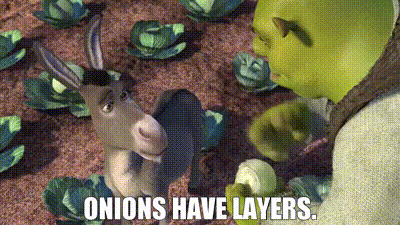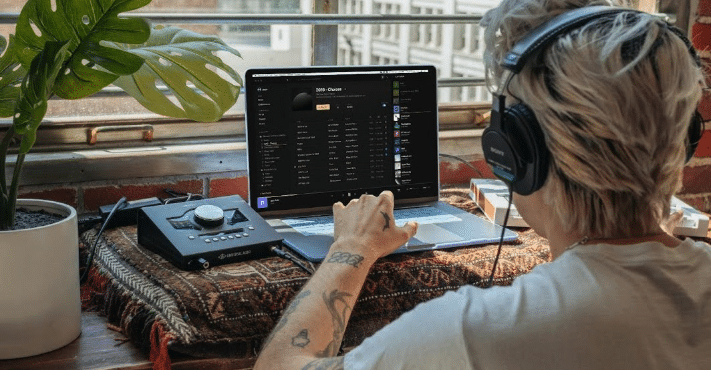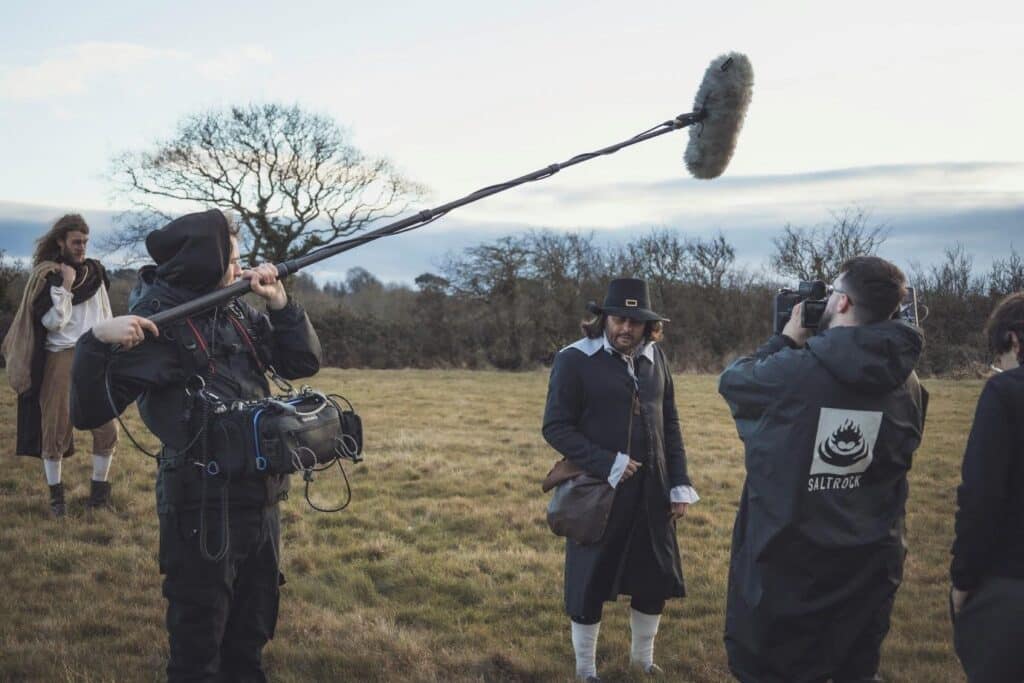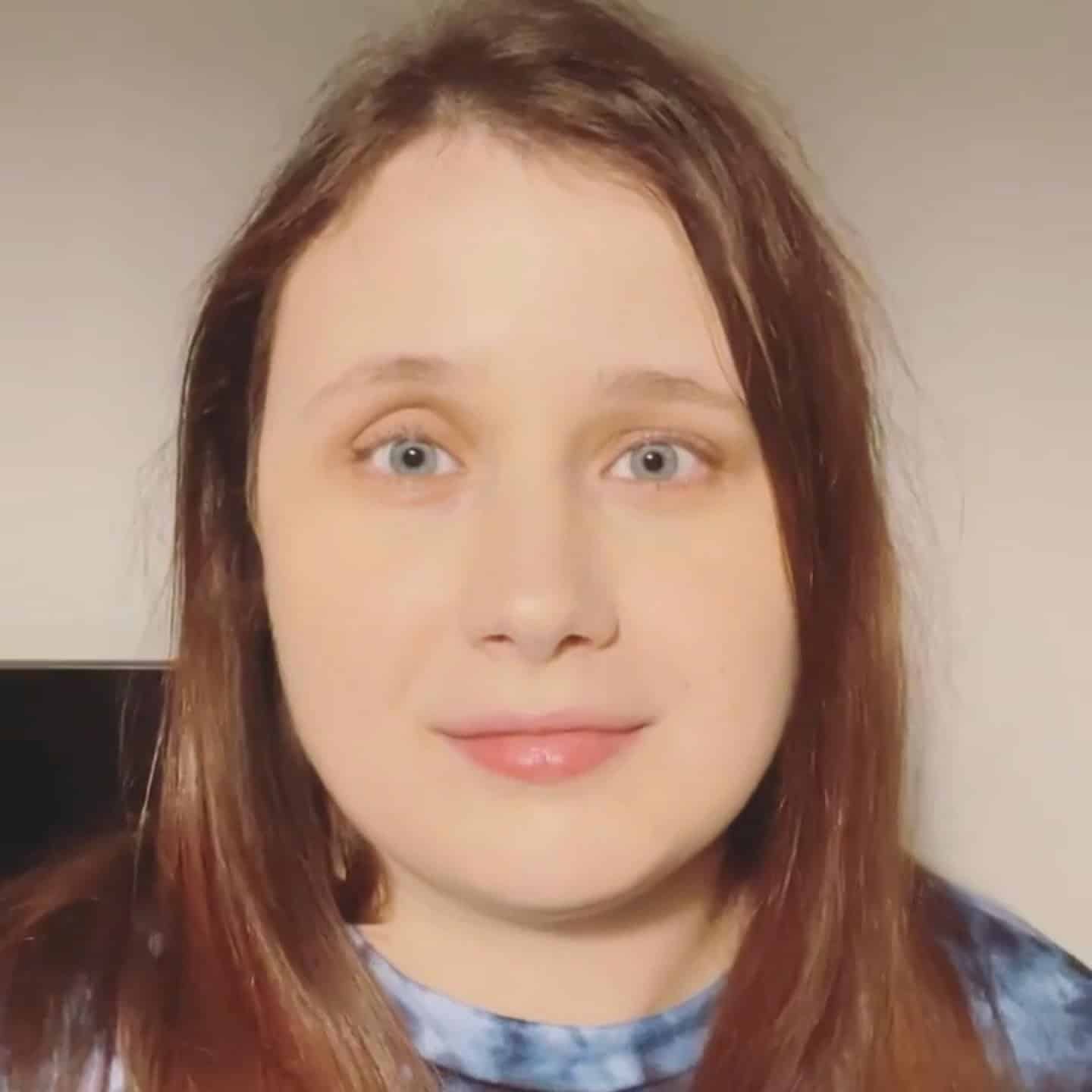
While film is a visual medium, sound is what turns that visual narrative into a visceral, immersive experience. From the rumble of spaceships, the creak of haunted floorboards, or the subtle tension in a quiet conversation, sound plays a critical role in shaping how we interpret stories, whether we notice it or not.
But there is a lot more to it than just adding background music and sound effects or syncing dialogue! Sound design choices are made at the pre-production stage all the way through to post-production. It’s an essential for how films communicate mood, realism and emotion to their audiences.
In today’s blog, we’ll explore just what sound design is, what sound designers do, showcase some of the best examples of sound design in the film world. Plus, you’ll find out why every screenwriter should care about sound early on!
Sounds like a plan!
In This Article
- What is Sound Design?
- What Does a Sound Designer Do?
- Great Sound Design in Film Examples
- Should Screenwriters Think About Sound?
- Tools for Managing Sound in Pre/Post
- Sound Design FAQs
- Conclusion

What Is Sound Design?
Sound design is the art and practice of creating and manipulating audio elements in a film to enhance the storytelling.
It encompasses everything we hear in a movie aside from the score: dialogue, ambient sound, foley effects, and sound effects.
So, what exactly does sound design do for a story? Well, it helps:
- Build atmosphere and mood
- Shape audience perception of the story
- Create realism or intentional surrealism
- Emphasize action and reaction
- Fill in storytelling gaps without exposition
Key Elements of Sound Design
Sound design is made up of multiple layers, much like an onion…

Ahem, yes layers. Let’s explore some of these:
1. Diegetic vs. Non-Diegetic Sound
Diegetic sounds exist within the world of the film, for example footsteps and door creaks. On the other hand, non-diegetic sounds come from outside the narrative world, consisting of voiceovers and scores.
We have a whole blog on diegetic sound. Why not check it out here?
2. Foley
What a strange name! Well, it’s actually custom-recorded sounds that mimic everyday actions, like grabbing a doorknob or rustling clothes.
3. Sound Effects (SFX)
Sound effects can range from a gunshot to the hum of a spaceship. These are often manipulated or synthesized.
4. Ambience and Atmosphere
These effects are subtle background layers that make a settling feel alive, like birds chirping or distant traffic.
5. Soundscapes and Design Layers
A soundscape may be completely invented for sci-fi or fantasy worlds, requiring multiple layered elements.
Sound design isn’t just about filling silence but about using sound to tell the story. While not immediately obvious, once you strip the sound away, you’ll quickly understand how hollow a scene feels.
Don’t let your audio get lost in the mix.
Celtx’s script notes help you highlight important sound design moments early.
Sign up & get started today!
What Does a Sound Designer Do?
A sound designer wears many hats throughout a film’s production and post-production phases. Their role on a film production is to sculpt the sound design to align with the director’s vision and the story’s tone.
On the film Nope, I did wear several hats as the sound editor, sound designer and re-recording mixer. In a usual production, these roles are typically separated and handled by different individuals or teams. However, in the case of Nope, being a very much longer than usual process, having engaged at script stage and realized much design work before the shoot, I felt that having one person handle all of these roles allowed for a greater level of collaboration and cohesion; Ideally I see all the effects, recording, mix, presentation of the sound in the theatre as just parts of the sound design process. – Johnnie Burns (2023) – Interview with SoundStripe.com
Let’s take a closer look at a sound designer’s job description:
Conceptualization
Before a scene is shot, sound designers may work with the director to plan how sound will function within the genre and story. This is especially important in horror, fantasy, action, or sci-fi genres which often require more complex soundscapes and design.
Recording and Capturing
A sound designer will also source or record raw sounds using high-fidelity microphones, especially for foley or ambient layers that need extra realism.
Designing Original Sounds
For fantasy and sci-fi worlds, a particular sound may not exist. Need a sound of a dragon flapping its wings or a laser cannon charging up? That’s where the sound designer comes in, creating new sounds from scratch.

Sound Editing and Layering
Once they have all their sounds recorded or compiled, a sound designer will then manipulate the raw audio. They’ll cut and mix different tracks and layer sounds to build a rich aural environment.
Syncing and Blending
A sound designer ensures that audio elements match with visual cues; the last thing you want is footsteps being completely out of sync with a character’s walk. Dialogue and sound must blend naturally.
Mixing and Mastering
Often in collaboration with re-recording mixers, the sound designer will polish the mix so dialogue, effects and music balance correctly.
We mentioned collaboration there. While collaboration on a film set is crucial to a project’s success, the sound designer will have a particular set of colleagues to bring sound to life.
Sound designers will work with:
- Directors to understand the overarching creative vision
- Composers to avoid sound clashes and maintain harmony between music and sound effects
- Editors to align visual cuts with sound dynamics
- Foley artists who physically create live-recorded sound effects
A great sound designer doesn’t just work with sound but thinks like a storyteller. Sound must enhance character, pacing and tension!
Johnnie Burn was the sound designer on Jordan Peele’s movie Nope and talks about his experiences to SoundStripe.com.
Great Sound Design in Film Examples
Many films stand out not only for what we see on screen but what we hear, or don’t hear!
Here are some iconic examples where sound design elevated storytelling, and then some:
Case Study #1 | A Quiet Place (2018)
In a film where silence is key to survival, sound design takes center stage. Every creak, breath, and movement carries weight. The filmmakers used shifts in audio perspective to mirror the experience of a deaf protagonist, Regan, pulling the audience into her world.
Check out this awesome video below from Insider which details exactly how sound effects for the movie were created:
Case Study #2 | Inception (2010)
The booming ‘BRAAAM’ sound became instantly recognizable, but the entire film’s layered sound design helps distinguish the different dream levels the characters experience. It also heightens action and manipulates both our and the characters’ perception of time.
This featurette from Inception’s behind-the-scenes explores how sound effects the visuals:
Case Study #3 | Star Wars (1977-Present)
Sound designer Ben Burtt is behind the legendary sound effects like lightsabers, R2-D2’s voice and Dath Vader’s breathing, all sounds that make the Star Wars franchise instantly recognizable.
These sounds became synonymous with the franchise, giving fictional elements sonic reality.
Check out how Ben Burtt created the iconic sounds here:
Case Study #4 | Gravity (2013)
Though set in the vacuum of space where sound technically doesn’t exist, the film uses sound design innovatively, transmitting vibrations through the characters’ suits and relying on internal and subjective sound.
SoundWorks Collection spoke to the movie’s director Alfonso Cuarón and re-recording mixer Skip Lievsay about how they created such a dramatic soundscape:
Case Study #5 | The Lord of the Rings Trilogy (2001-2003)
From the thunderous footsteps of Balrogs to the gentle rustling of elven forests, every environment is distinctive due to its sound design. The sound designers created immersive worlds which perfectly complemented the visuals as explained here by the crew in this behind-the-scenes featurette:
Great sound starts with great planning.
Use Celtx to break down scenes and prep for every audio detail.
Click here to sign up now!
Should Screenwriters Think About Sound?
Yup, we already have a lot to think about! However, being aware of sound design can help us make our screenplays even more cinematic.
Let us explain:
Firstly, sound tells a story. As screenwriters, we might suggest at the hum of fluorescent lights growing louder as a character’s anxiety builds. We can hint at sound cues like this to add layers to the scene.
If we can also acknowledge silence, ambient noise, or disorienting sounds in our screenplays, we can better guide the pacing and rhythm of our scenes.
Overall, describing a sound-rich environment can give the directors and sounds designers inspiration. But inspiration is all we want to give them; don’t be tempted to micromanage sound design!
- Do use brief sound cues to enhance mood
- Do think about how silence, contrast, or noise could play into emotion or suspense
- Don’t dictate exact sound effects unless it’s crucial to the plot
Tools for Managing Sound in Pre/Post
From indie filmmakers to Hollywood professionals, a wide range of tools exist to help manage sound design.
Depending on the stage of the production, different tools will be used. Let’s run through them:
Pre-Production Tools
First, sound designers will start with storyboarding and sound maps. Visual planners that include notes on expected audio or critical sound beats.
They’ll also use temp tracks which are placeholder audio files that help set mood or rhythm before the sound is created.

Post-Production Tools
Sound designers will use Digital Audio Workstations (DAWs) which are professional, industry-standard tools for editing, mixing, and mastering. Examples of these include Adobe Audition which are great for dialogue cleanup and podcast-style mixing. For music-heavy projects and soundscapes, programs like Logic Pro are idea.
Sound libraries are also extremely popular resources for sound designers, which offer pre-recorded SFX for every imaginable need. Boom Library, Freesound.org, and Soundly are just a few sound libraries that offer these sounds.
For foley creation, there are several tools that can be used to give sound designers ultimate control:
- iZotope RX for cleaning audio
- Altiverb for adding realistic reverb
- Spitfire Audio for atmospheric layering
If a sound designer wants to create VR and immersive experiences, tools like Dolby Atmos and Dear Reality can enhance positional sounds to help audience’s feel right in the moment with the characters.
But all these tools must be expensive, right? Well, yes, but even low-budget creators can start with free or more affordable tools and build from there. Programs like Audacity are ideal for beginners or those on a tight budget!

Sound Design FAQs
Is sound design the same as music scoring?
Not quite. Yes, both contribute to a film’s audio landscape but scoring refers to the musical soundtrack which is often created by a composer. Sound design, on the other hand, includes all non-musical elements like sound effects, ambiences, and dialogue.
Do all films need complex sound design?
Not at all. All that matters is sound is thoughtfully used. Even minimalist dramas need clean dialogue, subtle ambiences, or occasional effects to feel grounded and draw audiences into the immersion.
Can a director also be a sound designer?
In indie films it’s common for directors to take on multiple roles which could absolutely include sound designer. However, on larger productions, there’ll always be a specialized sound designer who brings their expertise and focus that’s hard to match.
How do I learn sound design?
Many aspiring sound designers begin with online tutorials, free DAWs, and practice on short films. Schools like Full Sail and online platforms like Coursera, Skillshare, and YouTube offer structured learning paths.
What makes ‘bad’ sound design?
Bad sound design can include poor syncing, inconsistent levels, overwhelming background noise, and unnatural effects. Even great visuals can fall flat if the audio is jarring or poorly mixed.
For more tips on sound design, check out The Pro Audio Files here.
Conclusion
Sound design is the unsung hero of filmmaking. It brings invisible depth, evokes emotion, and guides an audience’s subconscious experience of a story. From the faintest rustle to a world-shaking explosion, every sound tells part of the narrative.
Whether you’re a filmmaker, screenwriter, student, or enthusiast, understanding the power and potential of sound design will forever change how you experience movies. And that’s the beauty of this craft, as it works best when you don’t even notice it, yet you’d miss it the second it was gone.
From script to screen—and every sound in between—Celtx helps you plan for a polished final product.
Start your next project with Celtx today.
You might also like:
- Post-Production 101: Everything You Need to Know
- Voice Over Script Format: How to Write (and Format) V.O. Like a Pro
- A-Roll vs. B-Roll Footage | What’s the Difference?
